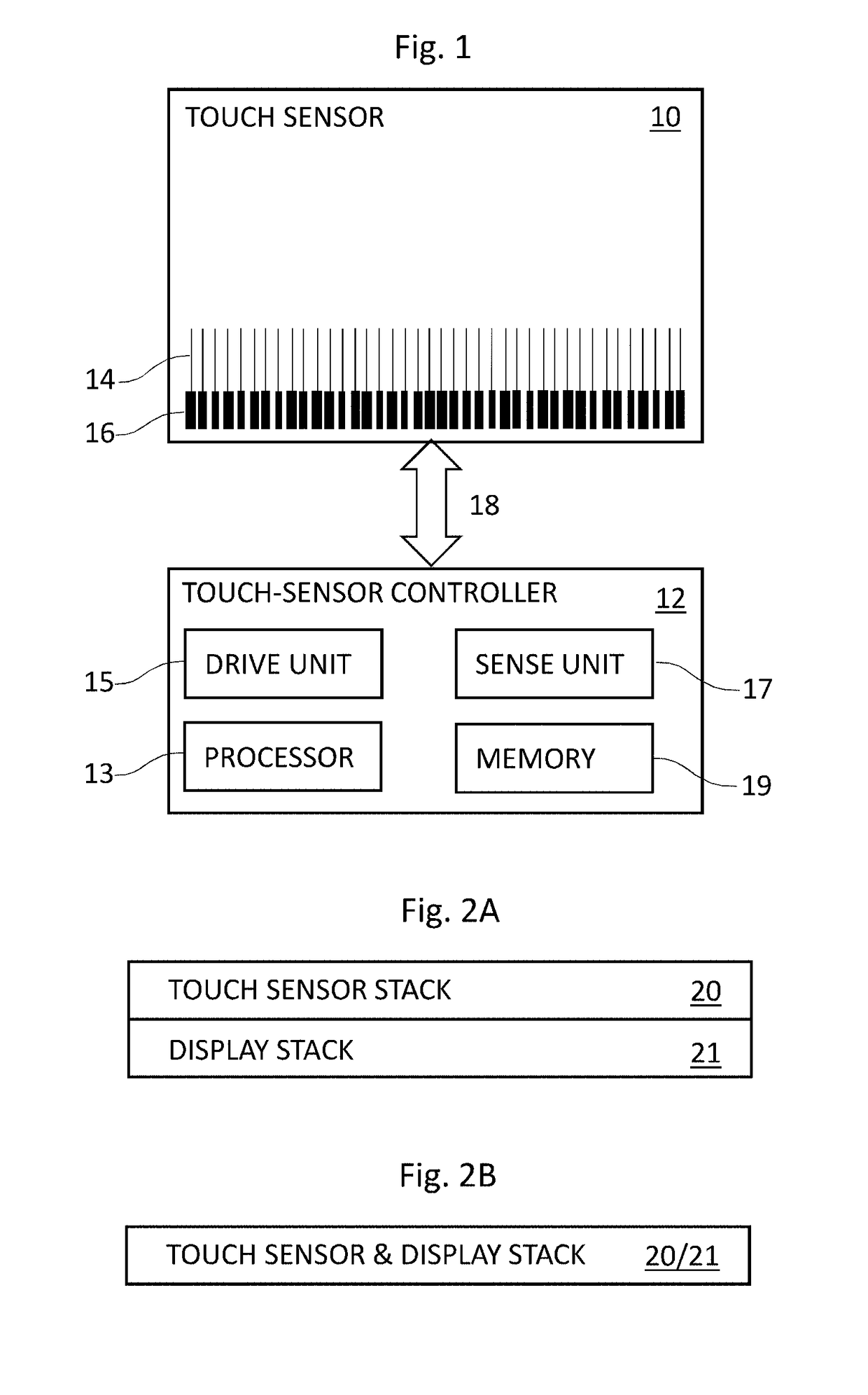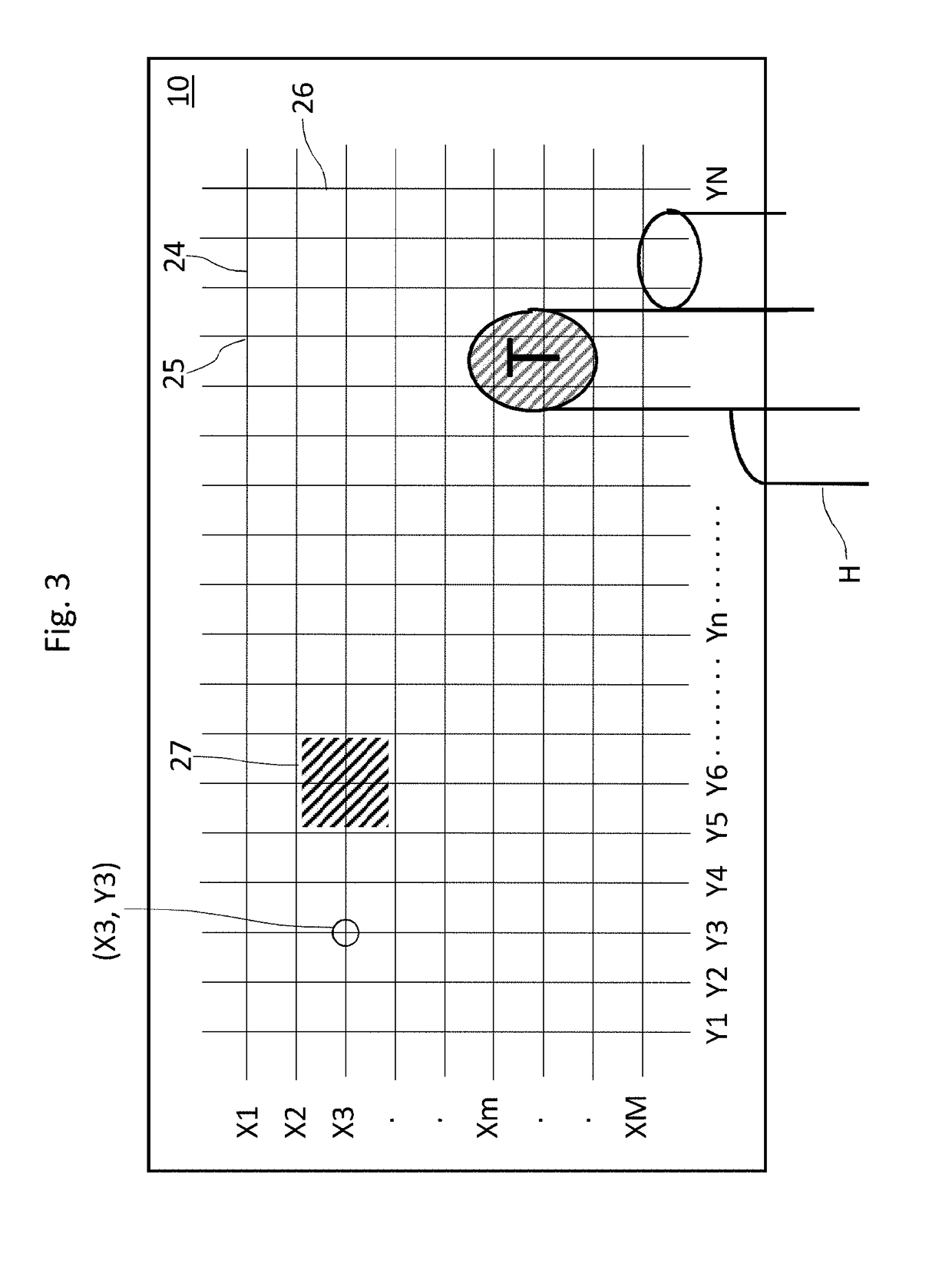Touch Sensor
a capacitive touch and sensor technology, applied in the field of position-sensitive capacitive touch sensors, can solve the problems of poor linearity and accuracy of algorithmic position errors, and the situation is even more problematic, and achieve the effect of improving noise performan
- Summary
- Abstract
- Description
- Claims
- Application Information
AI Technical Summary
Benefits of technology
Problems solved by technology
Method used
Image
Examples
Embodiment Construction
[0088]In the following detailed description, for purposes of explanation and not limitation, specific details are set forth in order to provide a better understanding of the present disclosure. It will be apparent to one skilled in the art that the present disclosure may be practiced in other embodiments that depart from these specific details.
[0089]FIG. 1 illustrates an example touch sensor 10 with an example touch-sensor controller 12, often referred to in the art as a touch integrated circuit (touch IC) or touch sensor / screen controller / chip (TSC). The touch sensor 10 and the touch-sensor controller 12 may detect the presence and location of a touch or the proximity of an object within a touch-sensitive area of the touch sensor 10. The touch sensor 10 may include one or more touch-sensitive areas. The touch sensor 10 may include an array of electrodes which may be arranged in a single layer or multiple layers. The electrode array will usually be of a conductive material, each lay...
PUM
 Login to View More
Login to View More Abstract
Description
Claims
Application Information
 Login to View More
Login to View More - R&D
- Intellectual Property
- Life Sciences
- Materials
- Tech Scout
- Unparalleled Data Quality
- Higher Quality Content
- 60% Fewer Hallucinations
Browse by: Latest US Patents, China's latest patents, Technical Efficacy Thesaurus, Application Domain, Technology Topic, Popular Technical Reports.
© 2025 PatSnap. All rights reserved.Legal|Privacy policy|Modern Slavery Act Transparency Statement|Sitemap|About US| Contact US: help@patsnap.com



